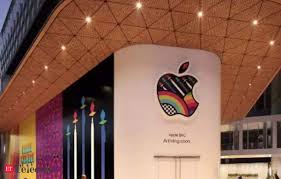Apple is facing notable challenges with the supply of screens for its Apple Vision Pro headset, prompting the company to seek assistance from Chinese vendors to address these issues.
The displays required for the Apple Vision Pro are known for their complexity, making large-scale production a daunting task. Consequently, Apple has scaled back its orders for 2024. To compound the issue, Sony, the sole known manufacturer of these intricate displays, has reportedly declined to increase its production capacity.
Read also: Apple unveils $3,500 augmented reality headset at Conference
New Suppliers on the Horizon
To circumvent these challenges, Apple is exploring new partnerships with Chinese suppliers to diversify its sources of displays for the Vision Pro. One such supplier is SeeYa Technology, a newcomer to the Apple ecosystem. Additionally, BOE, with a history of collaborating with Apple on displays for the iPhone, is being brought in to support the Vision Pro project.
However, it remains uncertain whether these new suppliers will lead to an increase in orders for the Vision Pro. Anonymous sources have suggested that BOE and SeeYa are being evaluated for potential involvement in future iterations of the Vision Pro and in the production of displays for a lower-cost headset currently referred to as N109.
The current Vision Pro model relies on micro OLED technology, which is known for its challenges in large-scale production.
Government Support for Chinese Suppliers
A significant factor in this development is the direct support provided by the Chinese government to BOE and SeeYa for their investments in micro OLED factories. Reportedly, BOE has received $750 million in support. SeeYa Technology specializes in the creation of micro OLED screens and has ambitious plans to produce 20 million displays annually by 2020, with a $275 million investment to achieve this goal.
Chinese suppliers have become pivotal components in Apple’s Vision Pro headset production. Notably, Lens Technology and Genius Electronic Optical play crucial roles as suppliers. Furthermore, Luxshare Precision Industry has taken over assembly responsibilities, replacing Taiwan’s Pegatron in this role.
In the midst of these supply chain challenges, Apple continues to seek innovative solutions and partnerships to ensure the success of its cutting-edge Vision Pro headset. These developments highlight the dynamic nature of the technology industry and the importance of adaptability and collaboration in addressing supply chain issues.
Uses and Functionalities of Apple Vision Pro Headset
The Apple Vision Pro screen, a critical component of the headset, serves as the gateway to an immersive and advanced user experience. This screen technology, which relies on micro OLED technology, offers various uses and functionalities within the headset:
Immersive Virtual Reality (VR): The micro OLED screen in the Apple Vision Pro headset provides users with a stunning and immersive virtual reality experience. It brings digital worlds to life with vibrant colors, high resolutions, and responsive displays, allowing users to explore virtual environments, play games, and engage with VR content.
Augmented Reality (AR): The screen also plays a crucial role in augmented reality applications. With AR capabilities, users can overlay digital information and interactive elements onto their real-world surroundings. This is particularly valuable for tasks like navigation, educational experiences, and interactive work scenarios.
Multimedia Consumption: The high-quality micro OLED screen enhances the consumption of multimedia content, including videos, movies, and streaming services. Users can enjoy crystal-clear visuals and vibrant colors, making entertainment experiences more enjoyable.
Productivity and Work: For professionals and businesses, the Apple Vision Pro screen facilitates productivity and collaboration. It can display complex data, 3D models, and interactive presentations, making it valuable for tasks such as design, engineering, and remote teamwork.
Healthcare and Training: In healthcare and training applications, the screen enables realistic simulations and training scenarios. Medical professionals can practice procedures in a virtual environment, and educators can create immersive learning experiences.
Gaming: The screen’s responsiveness and high-quality visuals make it ideal for gaming. Gamers can enjoy realistic graphics and fast-paced gameplay, enhancing their gaming experiences.
Interactive Experiences: The screen supports touch and gesture controls, allowing users to interact directly with digital content. This is beneficial for applications like interactive storytelling, art creation, and user interface navigation.
Navigation and Wayfinding: The AR capabilities of the screen can assist users with navigation and wayfinding. It can overlay directions and points of interest onto the real world, making it easier to find locations and explore unfamiliar environments.
Professional Creativity: Artists and creative professionals can leverage the screen’s precision and color accuracy for digital art, graphic design, and content creation.
The Apple Vision Pro screen is a versatile component that enhances various aspects of the user experience, including entertainment, productivity, education, healthcare, and more. Its advanced technology and capabilities contribute to the headset’s appeal and functionality despite the challenges associated with its production.
